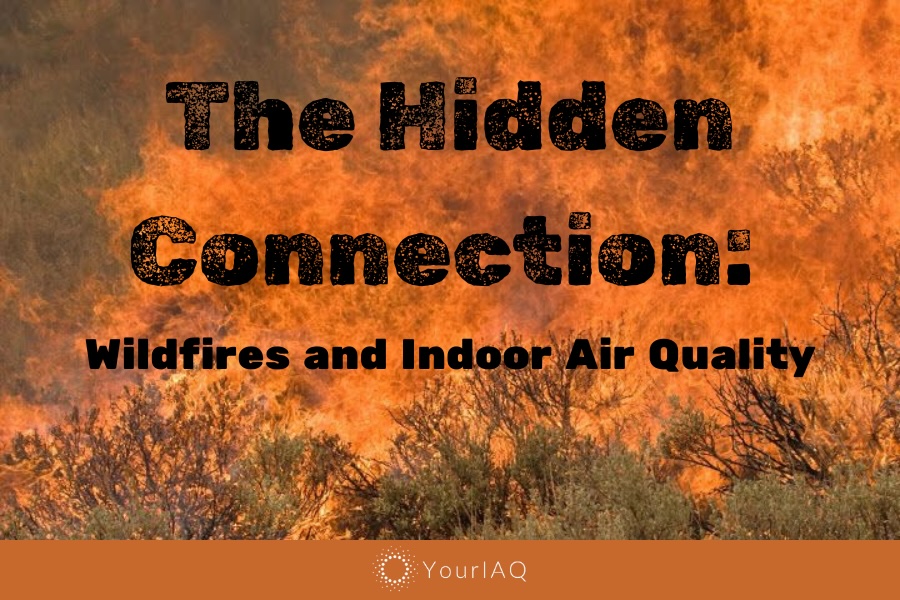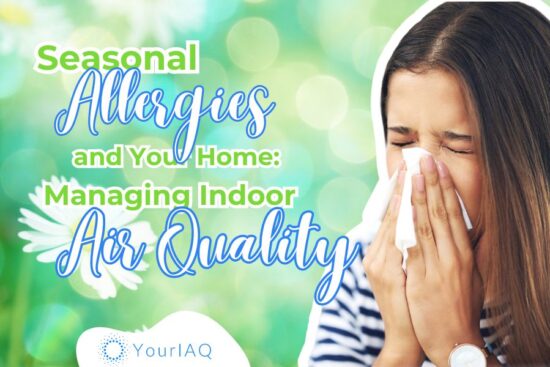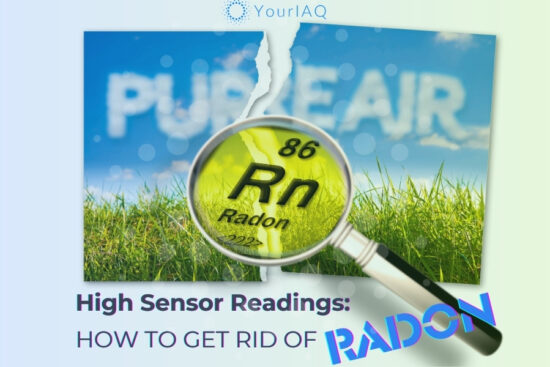
When we think of wildfires, we often picture the vast landscapes they consume and the billowing clouds of smoke against the sky. However, there’s a hidden aspect that directly affects us in the place we spend 90% of our time — our indoor spaces. In this beginner’s guide, we’ll explore the intricate link between wildfires and indoor air quality after a fire, offering practical insights and solutions to safeguard your well-being.
Understanding Wildfire Smoke Composition
Before delving into the impact on indoor air quality, (IAQ) it helps to understand a bit about what’s in wildfire smoke. It’s more than just a visible haze; it comprises fine particles, gases, and volatile organic compounds (VOCs). These microscopic elements can infiltrate your home and enter your lungs as you breathe, posing potential health risks.
Health Impacts of Wildfire Smoke Indoors
It’s crucial to think about indoor air quality after a fire because it has a direct correlation with your health. Fine particles from wildfire smoke can penetrate deep into the lungs, aggravating respiratory conditions and causing irritation. Protecting your indoor air quality is a proactive measure for your well-being.
Read more: Understanding the Relationship Between Climate Change and Indoor Air Quality
Monitoring Indoor Air Quality During Wildfires
In times of wildfires, staying informed about your IAQ becomes paramount. Utilize air quality monitors to track particle levels and take timely actions. Government agencies like the EPA provide real-time data, enabling you to make informed decisions to protect yourself and your loved ones.
See also: What Is an Air Quality Alert and Why Does It Matter?
Creating a Wildfire Preparedness Plan for Your Indoor Space
Crafting a wildfire preparedness plan for your indoor space ensures you’re ready when wildfires strike. Seal gaps, install weather stripping, and consider creating a dedicated clean air space. This preparedness plan is your shield against the intrusion of wildfire smoke into your sanctuary.
Read more: How to Protect Your Home From Forest Fire Air Pollution
Ventilation Strategies to Combat Wildfire Smoke
Optimizing ventilation is a powerful tool in your arsenal against indoor air pollution caused by wildfires. When outdoor air quality is compromised, close windows and doors. If you have an HVAC system, ensure it’s equipped with a high-quality filter that can trap fine particles, effectively purifying the air circulating indoors.
Related: Ventilation and Purification: 2 Keys to Healthy Indoor Air
DIY Home Hacks for Wildfire Smoke Protection
Simple yet effective, DIY home hacks can significantly reduce the impact of wildfire smoke on your indoor air quality. Consider using weatherproofing tape around windows and doors, and create a DIY air purifier using a box fan and a HEPA filter. These budget-friendly hacks contribute to a safer indoor environment.
FAQs: Indoor Air Quality After a Fire
Can indoor plants help improve air quality after a fire?
While plants can enhance air quality, they might not be sufficient to tackle the specific pollutants in wildfire smoke.
Should I keep windows open during a wildfire?
No, keeping windows closed helps prevent the entry of wildfire smoke into your home.
How often should I change my air purifier filter during wildfire season?
Check the manufacturer’s recommendations, but it’s advisable to replace filters more frequently during intense wildfire events. Most HVAC systems call for a filter change once every 3 to 6 months.
Can wildfire smoke impact indoor air quality even if the fire is miles away?
Yes, wildfire smoke can travel long distances and affect indoor air quality, even if the fire is not in close proximity.
Are there government resources for real-time air quality data during wildfires?
Yes, agencies like the EPA provide real-time air quality data, helping you stay informed.







